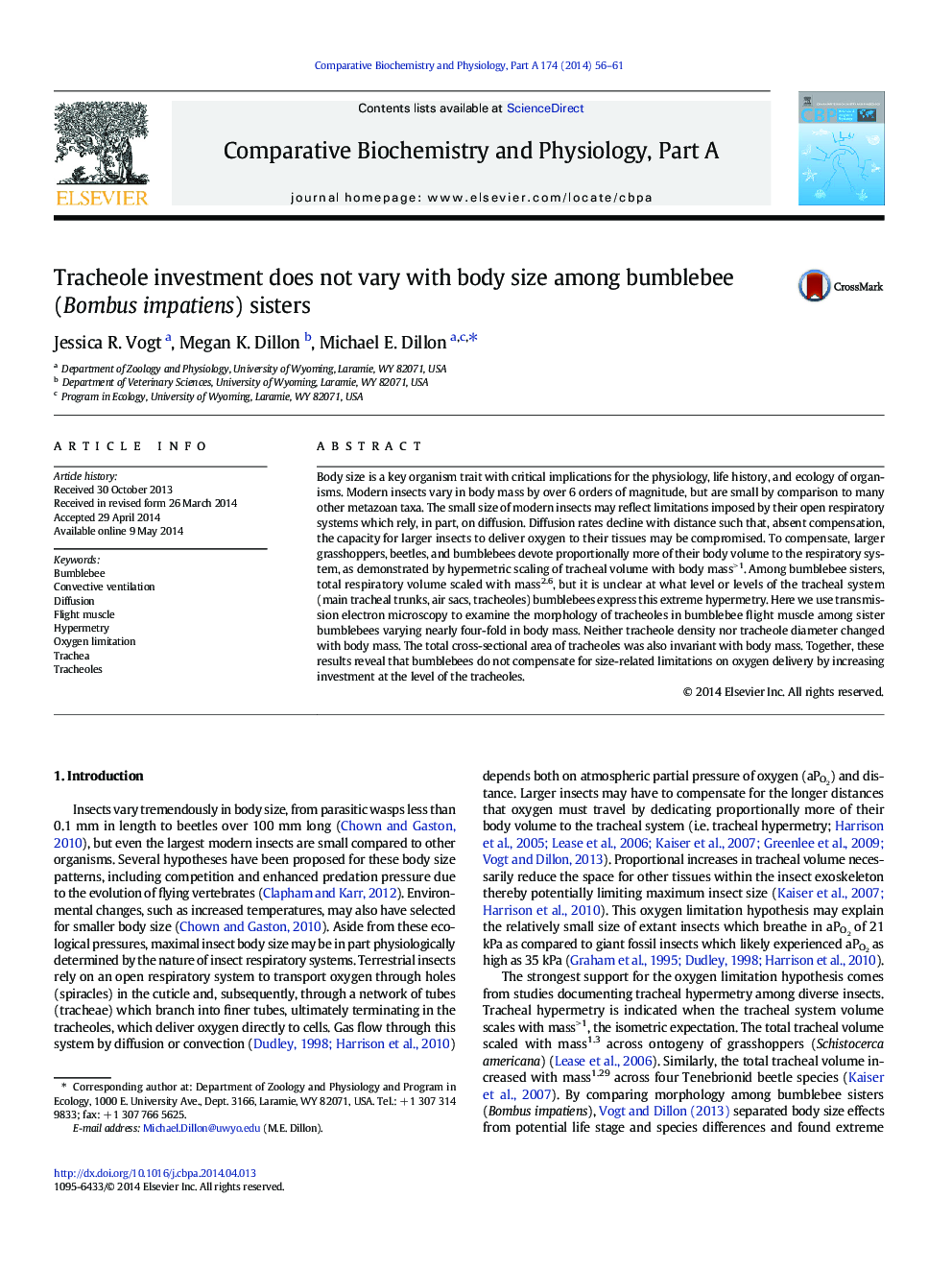| Article ID | Journal | Published Year | Pages | File Type |
|---|---|---|---|---|
| 1972209 | Comparative Biochemistry and Physiology Part A: Molecular & Integrative Physiology | 2014 | 6 Pages |
Body size is a key organism trait with critical implications for the physiology, life history, and ecology of organisms. Modern insects vary in body mass by over 6 orders of magnitude, but are small by comparison to many other metazoan taxa. The small size of modern insects may reflect limitations imposed by their open respiratory systems which rely, in part, on diffusion. Diffusion rates decline with distance such that, absent compensation, the capacity for larger insects to deliver oxygen to their tissues may be compromised. To compensate, larger grasshoppers, beetles, and bumblebees devote proportionally more of their body volume to the respiratory system, as demonstrated by hypermetric scaling of tracheal volume with body mass> 1. Among bumblebee sisters, total respiratory volume scaled with mass2.6, but it is unclear at what level or levels of the tracheal system (main tracheal trunks, air sacs, tracheoles) bumblebees express this extreme hypermetry. Here we use transmission electron microscopy to examine the morphology of tracheoles in bumblebee flight muscle among sister bumblebees varying nearly four-fold in body mass. Neither tracheole density nor tracheole diameter changed with body mass. The total cross-sectional area of tracheoles was also invariant with body mass. Together, these results reveal that bumblebees do not compensate for size-related limitations on oxygen delivery by increasing investment at the level of the tracheoles.
